How to Put a Fish Tape Back Together
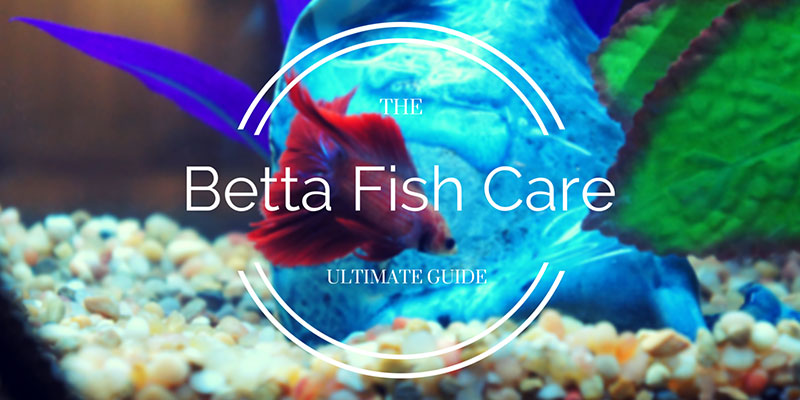
Being able to take care of a betta fish, means knowing what makes them happy and healthy. It also means knowing what causes stress and disease so you can avoid it. In our comprehensive betta fish care guide, you'll learn everything you need to know to promote a healthy habitat. This includes the recommended tank size, water quality and maintenance, feeding, and much more!
With proper care, your betta could live up to ten years despite their average life of 2-4 years. This discrepancy is largely due to misinformation in pet stores, on the internet, and from other betta owners. Betta fish are a beautiful and intelligent species of fish and deserve proper care.
Taking care of your betta requires a little education and responsibility for both kids and adults. The beautiful betta is pretty resilient and inexpensive to purchase and maintain, and they can bring years of companionship and joy.
If you're reading this, chances are you already have your betta fish at home. If not, pat yourself on the back for doing research prior to purchasing one. Knowing how to take care of a betta before you buy one will make things a lot easier; especially when purchasing a tank and other accessories for the first time.
Betta Care: Healthy vs Sick Checklist
You should be able to identify the difference between a healthy and a sick betta. This affects what type of care you will need to provide him or her over time. Even when first purchasing a betta fish, it's important to choose one that is healthy. Experienced caretakers, however, may purchase sick bettas to help save them from death and disease. Below are common characteristics of healthy and sick bettas.
Healthy Betta Fish
- Swim up to investigate when you get close to their habitat
- Are aggressive and may flare at you or other stimuli
- Possess bright colors, especially males
- Are hungry and eat regularly
- Undamaged fins
Sick Betta Fish
- Loss of appetite for extended periods of time
- Lethargic and frequently hiding
- Dull coloring, especially in males
- Tattered fins with black edges
- White growths on body or mouth
- Swimming abnormally
- Labored breathing
- Clamped fins
- Bloated
Think your betta fish may be sick? Visit our disease symptom and treatment page.

Betta Tank Size and Environment
- 5 gallons is recommended, 2.5 is the absolute minimum.
- Smaller tanks are more work, requiring increased maintenance.
- No bowls. Those are for eating cereal out of!
- Betta fish are jumpers, always secure a lid on your tank.
- Don't restrict access to the water's surface, or fill your tank to its maximum capacity.
- Betta fish need natural day and night light cycles.
- Tank mates are tricky, visit our guide for more information.
- Never place 2 males, or a male and female in the same tank unless breeding.
- Females can live together in a "sorority" of 5 or more.
- Consider a tank divider to house two bettas in a single tank.
The absolute minimum tank size for a healthy betta is 2.5 gallons with the recommended size being 5 gallons or more. Larger tanks are easier to maintain nitrogen cycles and temperature and require less frequent cleanings. One of the biggest myths regarding bettas is how they can live just fine inside a tiny bowl or vase. To put this into perspective, you could live survive inside a tiny wooden box too if given food and water right? You wouldn't be very happy or healthy though.
In the wild, the betta splenden lives in shallow oxygen-deficient streams, rice paddies, and puddles, but many of these areas are still expansive in water volume. Your betta needs room to swim around and places to hide. Plus you'll enjoy him or her that much more if they have ample space to put on a show.
Never fill your tank to the maximum volume. Betta fish need access to the water's surface to gulp air using their unique labyrinth organ. The labyrinth organ allows them to extract oxygen from the air and not just the water via their gills. This is why bettas don't require air pumps. Also make sure you have a lid on your tank because bettas are great jumpers, and may leap right out of your tank. It happens all the time and is a very sad way to lose a betta.
Light: Natural and Artificial
Betta fish need natural or artificial light while they are awake during the day, and darkness at night so they can sleep. This establishes a regular day and night pattern, regulating their internal biological clock. Plants and other decorations provide shade if they do want to get out of direct lighting for a period of time.
Avoid direct sunlight entering your tank because it can quickly raise the water's temperature to dangerous levels and ignite unwanted algae growth. Artificial lighting is recommended, placing your betta fish's habitat away from windows. This way you control light being on during the day, and off at night with the simple touch of a button.
Tank Mates
Some bettas are too aggressive to live with other inhabitants, but they can play nice with certain tank mates that are non-aggressive and do not possess any bright colors or long fins. The reason the betta is known as the Siamese fighting fish is because of the male's acute aggressiveness. This was heightened from selective breeding in the 1800s and is still a part of their genetic makeup.
Success increases by adding community fish with bettas in larger tanks that have plenty of spaces to hide. Use an 8-10 gallon or larger aquarium to provide enough space for a proper community habitat.
The increased space in larger tanks will decrease the territorial instincts of the betta and may decrease the aggression against certain types of fish. If in doubt, always ask a local pet store employee before you buy a potential community fish, or read the forums at bettafish.com.
DO NOT put two males in the same tank because they will fight and nip at each other, likely until one is dead or severely stressed. This is cruel and should never be done! Males should also never be housed with a female unless they are breeding for short periods of time and then separated.
Males will exhibit aggressive behavior against females too. Females, however, can live together in groups of five or more, but the tank size should double to 10 gallons or more. A good rule of thumb is 1 gallon per 1 inch of each fish. If you have 5 females, each 2 inches, that would translate to a 10-gallon tank.

Plants, Hideouts, and Decorations
- Betta fish need plants and hiding places to feel safe.
- Mimic a betta fish's natural habitat to reduce stress.
- Live plants are ideal for their added cleaning benefits.
- Fake plants and leaves should be silk and not sharp plastic.
- Be careful of sharp edges on hideouts and decorations.
A major part of caring for a betta fish involves making sure they are content and not stressed. Mimicking their natural habitat is the best way to accomplish that. Bettas love places to hide so they can feel safe, especially when sleeping. Think of hiding places like their homes.
Their natural habitat has lots of places to hide, including substrate, rocks, plants and sticks. Live plants are the best for aquariums because they can help remove ammonia from the water (e.g. Amazon Sword) and they're soft.
Don't worry though, artificial plants are fine too, and they are inexpensive and resilient. Their quality has really improved in recent years and look almost identical to the real deal. Be careful with artificial plants and decorations because they can damage your betta's fins.
All artificial plants and leaves should be silk if possible. Logs and other hideaways should also be inspected for sharp edges and sanded down if necessary. Betta owners like to use what is called the 'pantyhose test', running it down the plant or decoration to see if it snags. If it does, the plant or hideout will likely snag a betta's delicate fins too.
Visit our complete guide to the best live and fake betta fish plants.
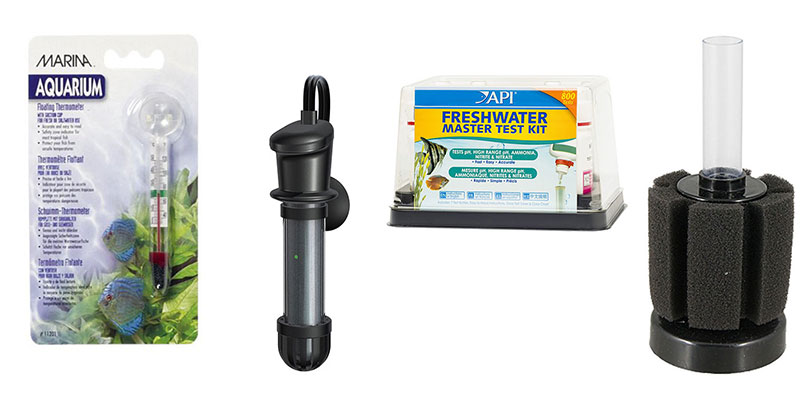
Water Temperature and Quality
- Maintain a tropical habitat at 76-81 degrees Fahrenheit.
- Betta fish prefer water in the pH range of 6.5-7.5.
- Ammonia should ideally be zero parts per million (ppm).
- Nitrate should be less than 40 parts per million (ppm).
- Nitrite should ideally be zero parts per million (ppm).
- Use water conditioner/dechlorinator to make tap water safe for bettas.
- Use an aquarium thermometer to monitor your tank's temperature.
- Filter's reduce ammonia, nitrate and nitrite levels, and preserve healthy bacteria.
- Avoid drastic changes in water temperature and water quality.
- Use test strips to monitor water parameters.
Betta fish come from a tropical climate in Thailand so they require warm water in their tanks. Never let the water in your tank drop below 65 degrees or go above 82 degrees, and try to keep it in the range of 76 to 81 degrees Fahrenheit. This is the temperature bettas are happiest and active at.
The average room temperature in a home is 68 degrees Fahrenheit, which is well below their required temperature. If your habitat's water is consistently too cold your betta will become withdrawn and eventually sick. This is the quickest way to reduce their potential lifespan. The only time a heater is not required is if the surrounding temperature in the room the tank is in is at least 78 degrees Fahrenheit.
Thermometer and Heater
Purchase an aquarium-safe thermometer to record the water's temperature. If the temperature is too low, purchase a small aquarium heater (e.g. 20 watts). Heaters that are adjustable and contain a built-in thermostat are the best solutions.
Betta fish are very sensitive to changes in their habitat's temperature and water parameters. When changing the temperature and water conditions, do it slowly and methodically. Abrupt changes can stress your fish and even cause adverse health consequences.
Filter
While filters aren't mandatory, they are highly encouraged for aquariums larger than 3 gallons. Filters reduce harmful bacteria while supporting healthy bacteria. They are your little helpers when it comes to tank maintenance and caring for your betta fish. A filter is relatively inexpensive and is best when included with an entire setup.
Betta fish are not very strong swimmers and a filter can stress them out if the current is too strong. Prolonged agitation can lead to ripped fins, acute stress, and even death. Choose a filter that is adjustable or recommended for a betta fish. Baffle intake tubes and exits with pre-filters if necessary to reduce strong currents. For more information on betta fish and filters, click here.

Water
Water added to the tank must be free of chlorine and other contaminants. If you use tap water, be sure to use a betta water conditioner to remove chlorine, chloramine, ammonia, and other heavy metals. This prevents any potential harm or death. Never use distilled water either, because it has been stripped of all the essential minerals that bettas need to thrive on.
Betta fish prefer their water's pH to be slightly acidic. They do best in the pH range of 6.5 to 7.5 (7 is neutral). Some tap water and spring water may be significantly higher than 7.5 which means you should always test your water before adding it to your betta's tank. Consider purchasing a pH kit to keep it in a healthy range if necessary.
Also consider adding aquarium salt to your aquarium's water to reduce stress and swelling, and to promote healthy fins.
For more information on recommended water types and parameters, visit this page.
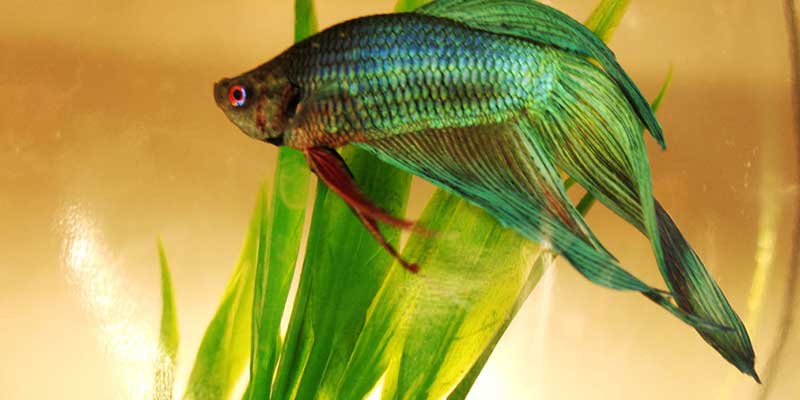
Christina Xu on Flickr
Habitat Care, Cleaning, and Maintenance
- A clean habitat promotes a healthy and happy betta fish.
- Proper betta care includes a systematic maintenance schedule.
- Non-filtered and smaller tanks require more frequent maintenance.
- Do not clean an aquarium, substrate, decoration with soap.
- Distilled white vinegar and regular bleach can be used as cleaning agents.
- Only remove your betta fish during 100% water changes.
- Monitor water parameters with test kits and strips.
Keeping a betta's tank (ecosystem) clean is crucial to their health and happiness. As your betta consumes food, digests it, and eventually gets rid of it (poop!), it ends up in the tank's water. The smaller the tank, the quicker it becomes polluted.
One of the most common issues linked to poor betta health is sustained exposure to increased levels of ammonia and nitrites. Water quality declines as ammonia builds up from waste and uneaten food. This forces the pH level of the water to get out of a healthy range.
Your fish will be swimming in its own waste and over time can lead to illness or even death. A good filter can help reduce these levels and establish healthy bacteria in tanks 3 gallons or larger. Filters are not recommended for tanks smaller than 3 gallons.
How Often Should You Clean A Betta Fish's Tank?
A systematic maintenance schedule must be adhered to. Tanks under 3 gallons will need more frequent and complete water changes to avoid dangerous levels of ammonia. It can be done, it's just more work.
Non-filtered tanks require 1-2 water cycles at around 25% and a full 100% water change each week (depending on water quality). A 5-gallon filtered tank will only need 1-2 water cycles per week at around 25% of total volume and a 100% water change once per month depending on water quality.
Keep a pH kit in your supplies to test your tank's water. Smaller tanks and those that are unfiltered are more work in the long-run because of how rapidly the water's quality can decline. Remember, adding live plants can also help reduce ammonia levels in the water naturally.
Water cycling (removing some and adding new) and changes (complete volume replacement) are necessary for filtered tanks too but are more frequent and important in non-filtered habitats. If you're only cycling the water, don't remove your betta. Unnecessary removal can lead to potential stress and injury. Only remove your betta during 100% water changes.
Betta fish get used to their ecosystem and don't like abrupt changes to it. Because of this, you should cycle more than you do a complete change. Removing too much of the existing water in the tank and then adding new can cause your fish to go into shock. This may be due to changes in water parameters or temperature. Always acclimate your betta fish when re-introducing them to their tank after a complete water change.
Removing 25-50% of the tanks water and refilling with similar temperature and pH dechlorinated water is the safest route. Whenever adding new tap water, make sure to use dechlorination drops or spring water that has chlorine already removed.
How to Clean Your Tank and Decorations
Cleaning your tank and its decorations is very important for your betta fish's health. Only use approved aquarium decorations and materials that are safe for fish. Use a magnetic or algae cleaning wand for regular algae removal while the tank is filled.
Filters and their media should be cleaned by rinsing them in existing tank water to preserve healthy bacteria. Other components should be cleaned and disinfected. Never clean a tank or its components with soap! It's very tough to remove all the soap and it can poison your betta once the tank is refilled.
All existing and new decorations (including stones) should be washed thoroughly with hot, hot water to remove dust and other contaminants. If you want to increase the cleaning power, you can use distilled white vinegar to remove stubborn stains and smells.
Regular bleach that is free of detergents and perfumes is another excellent and powerful cleaning option; especially after disease. Use a 10% mixture: 9 cups of water to 1 cup of bleach. Do not let the mixture stay on any aquarium or decoration's surface longer than 10 minutes. Always rinse, rinse, rinse all surfaces with clean water to remove any bleach traces before refilling.
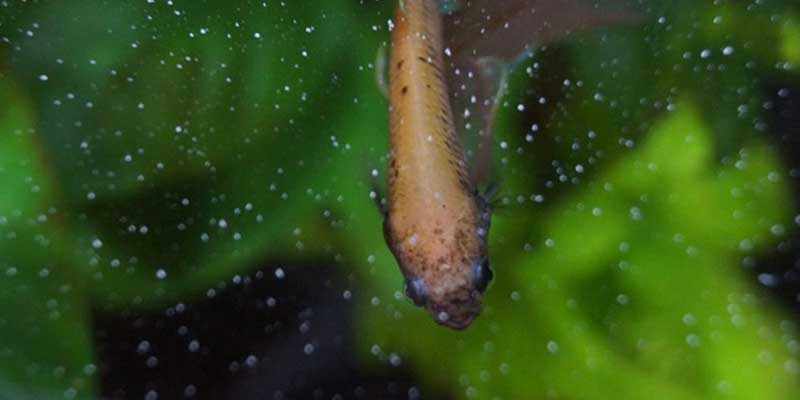
Amanda Moore on Flickr
Food and Feeding
- Betta fish are carnivores – they need protein-rich food.
- Keep the water's surface unobstructed, they are surface feeders.
- Betta's tend to be picky eaters and may prefer a different brand or blend.
- Overfeeding causes a lot of adverse health problems.
- Feed 2-4 pellets, 1 to 2 times daily.
- A varied diet is the best diet.
Part of betta fish care means regular feedings! Betta fish need specific food because they are carnivorous and like meat. In the wild, bettas feed on insects and their larvae on the water's surface. Replicating their feeding environment and food will keep them happy and healthy.
Betta food comes in different varieties including pellets, flakes, live, and freeze-dried options. The most common ingredients are meat, fish, and shrimp. Do not feed your betta other tropical fish food because they need a specific protein-rich diet.
Betta fish can be very picky eaters too. Persistent refusal may mean trying a different brand or blend until you find the right one. Betta's also love treats once in awhile, but they might start to prefer them if you overdo it.
Freeze dried bloodworms and brine shrimp are a betta's favorites. Some owners prefer to use freeze-dried bloodworms or shrimp as their exclusive food source. Breeders may also stay away from manufactured pellets and flakes, opting for live foods to prepare for shows and breeding. The most important part, however, is ensuring a rich and varied diet.
Overfeeding
It's hard to gauge how much you should be feeding a betta. Food labels are often unclear and inconsistent. Their stomach is roughly the size of their eye and pellets can expand after they're ingested. Overfeeding leads to bloating, constipation, swim bladder issues, and a build up of uneaten food in the tank.
Get on a regular feeding schedule, and follow these guidelines if you're still unsure. If you decide to feed your betta twice a day, make sure to feed them about 2-3 pellets max during each feeding. Feeding once per day should be 3-4 pellets.
Many betta owners get stressed wondering why their fish won't eat, but in reality it's usually from prior over feedings. Betta fish may also refuse to eat during stress, especially when first bringing them home. Betta's can go 14 days without food before they starve to death, just like a human.
If you're going away for 2-3 days, never add extra food to compensate. It's better to allow a betta to go without food than to dump a bunch in there and think they'll eat it. They won't and it will only dirty the tank. If you're going away for more than 2-3 days, visit our vacation guide.
Infographic: Betta Fish Care Sheet
This infographic contains most of the things you'll need to remember in order to take care of a betta fish. Consider printing or saving it for future reference:
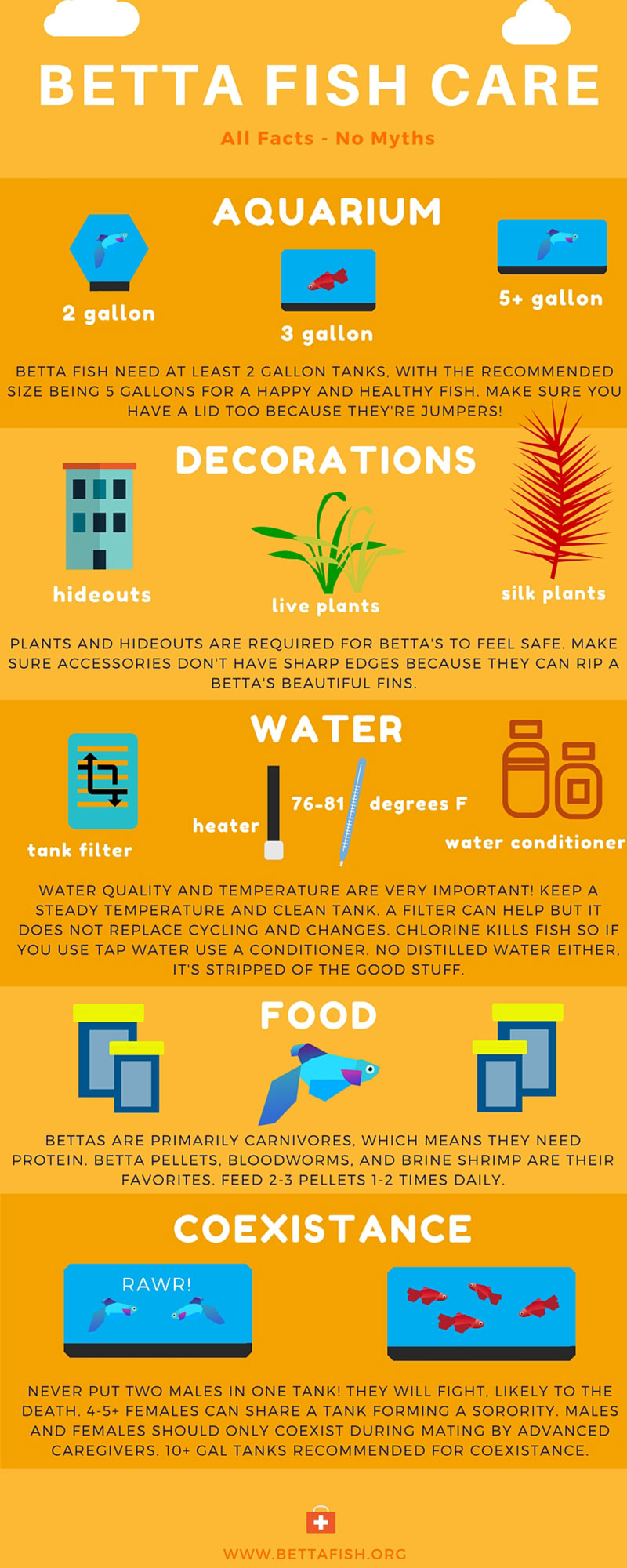
How to Take Care of Different Betta Fish
The difference between female betta fish care and male betta fish care is very minimal. They both require the same water parameters, food, tank size, and decorations/plants. Males and females can require different types of care before, during and after breeding, but that's more advanced than basic care. Females can also coexist together in sororities which lead to different recommendations on care too.
Betta fish fry (babies) require special care during upbringing. Petco recently began selling baby betta fish, and with improper care, they can die prematurely. Fry require special care, and special diets to survive because they cannot fit most betta pellets into their mouths. Fry upbringing should be reserved for experienced caretakers and breeders.
There are over 70 different species of betta fish, with the betta splenden being for sale in pet stores. Betta splendens come in many different tail variations through selective breeding, however, all require the same level and types of care. These include, but are not limited to, the crowntail, veil tail, double tail, delta tail, butterfly, and halfmoon.

Dvortygirl on Flickr
Maintenance Schedule for Proper Betta Care
Daily:
Ensure the water temperature is between 76 and 81 degrees Fahrenheit.
Look for odd behavior and signs of illness or fin damage.
Check heaters, filters and other equipment.
Feed your betta fish.
Weekly:
Cycle 20%-40% of the water each week for larger tanks.
Change 100% of the water for smaller tanks (e.g. 2.5 gallons).
Consider fasting your betta one day a week for digestive health.
Vacuum up uneaten food and waste.
Check pH and bacteria levels.
Monthly:
Check the functionality of filters, replacing media as necessary.
Prune live plants, clean fake plants, decorations, and algae.
Perform water cyclings and/or 100% changes on tanks 5 gallons or larger.
Vacuum up all waste and uneaten food from gravel.
Check water quality and pH levels.
Caring for a betta fish isn't that hard once you establish a routine and separate the myths from the facts. As a betta owner, you should always be monitoring the health of your fish and watching out for any indicators of concern. Most issues can be traced back to poor care in feeding patterns, acclimation, and tank maintenance.
Once you know how to care for a betta fish, please spread this information to other caretakers. Over time we can help reduce the prevalence of misinformation out there. Betta fish deserve the right to live a long and healthy life in captivity. Thank you.
Still, have questions? Visit the FAQ library or comment below.
How to Put a Fish Tape Back Together
Source: https://bettafish.org/care/
0 Response to "How to Put a Fish Tape Back Together"
Post a Comment